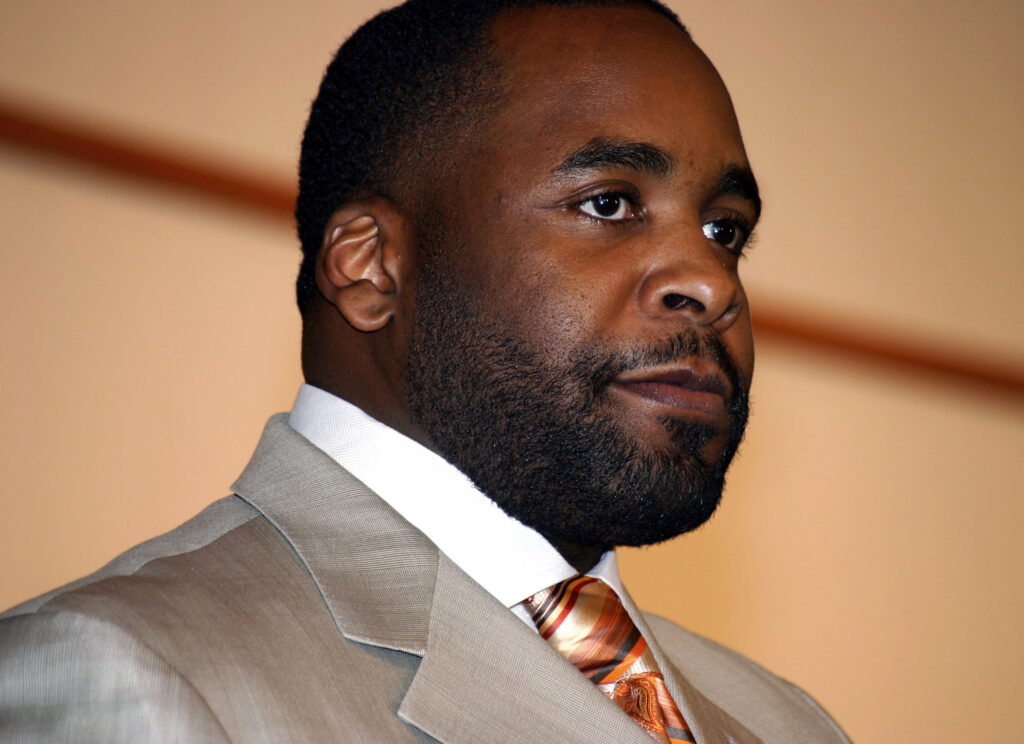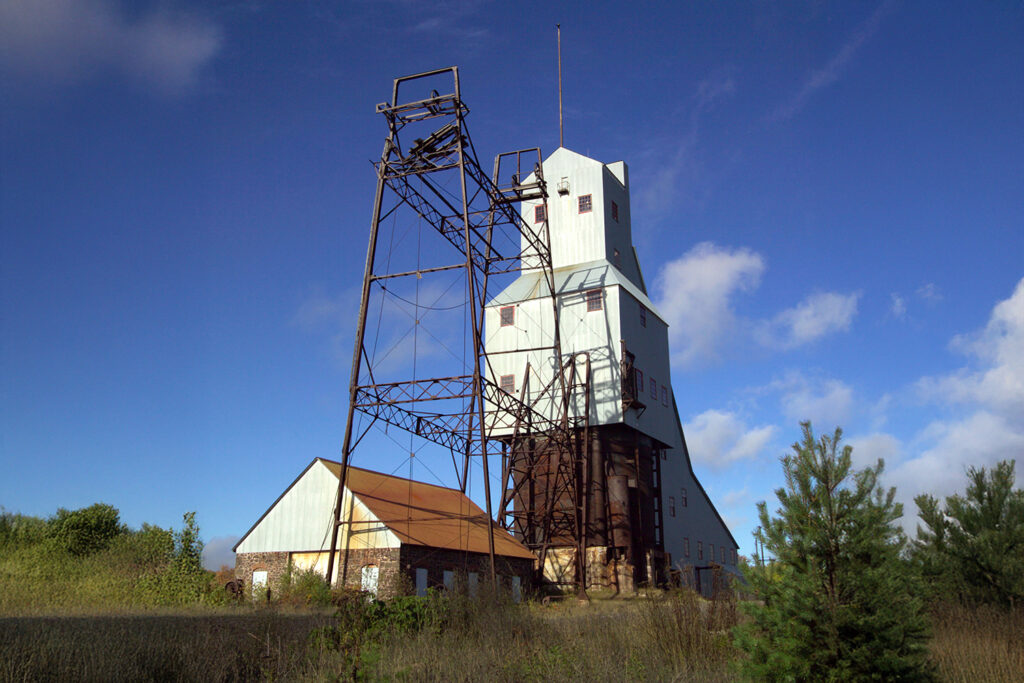Pinckney — One of the most horrific racial crimes in American history took place 90 years ago in Pinckney, and it’s a case that almost nobody remembers or talks about.
Michigan Enjoyer has also exclusively learned that a key part of the case could be reopened nearly nine decades after it happened. There were credible allegations back then that seven bodies had been dumped in a Pinckney pond that was owned by the state’s richest man.
The pond was never dredged back then. But it could be now. A true-crime mystery nearly a century old might be reopened.

On May 25, 1935, Silas Coleman, a black World War I veteran from Detroit, was gunned down in Pinckney by some members of the Black Legion, an ultra-violent offshoot of the Ku Klux Klan. He was killed by five men simply because they “wanted to know how it felt to shoot a black man.”
The victim and the killers were all from Detroit, but Pinckney—a sleepy town in southern Livingston County, about an hour away from the Motor City—is where the murder took place.
They dumped his body in the Pinckney Mill Pond, and it was discovered the next day by a local man named Edmund Haines, who was passing by and saw something suspicious in the water. Coleman’s body had six bullet holes in it and no clues as to who might have done it.
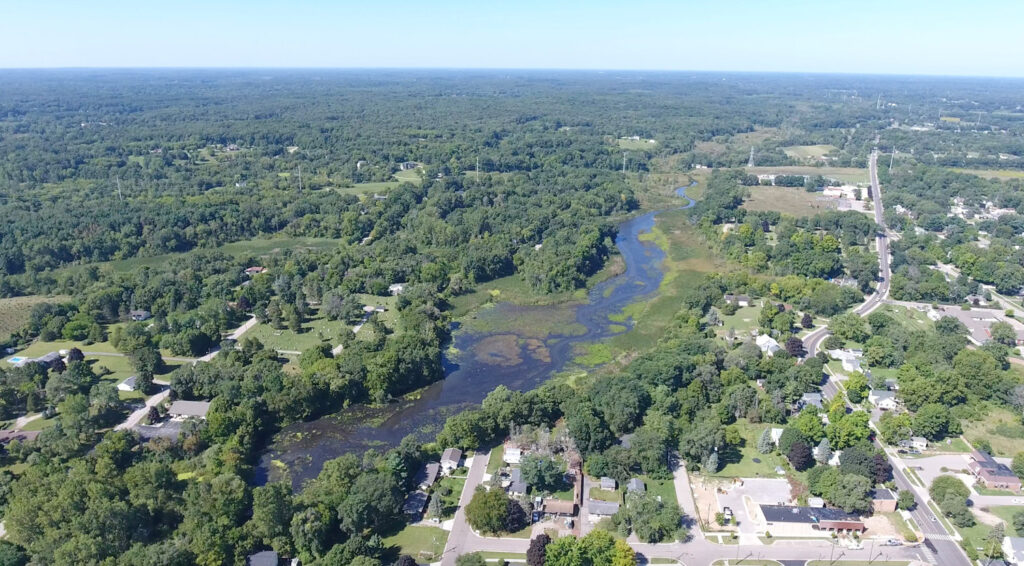
The case wasn’t solved until a year later, when a Legion member named Dayton Dean was caught on another case and decided to flip on the other five guys who shot Coleman. He told the cops everything, including this bombshell: Silas Coleman wasn’t alone.
There were at least seven more bodies in the Pinckney Mill Pond, Dean said, and if the cops dredged it, they’d find everything.
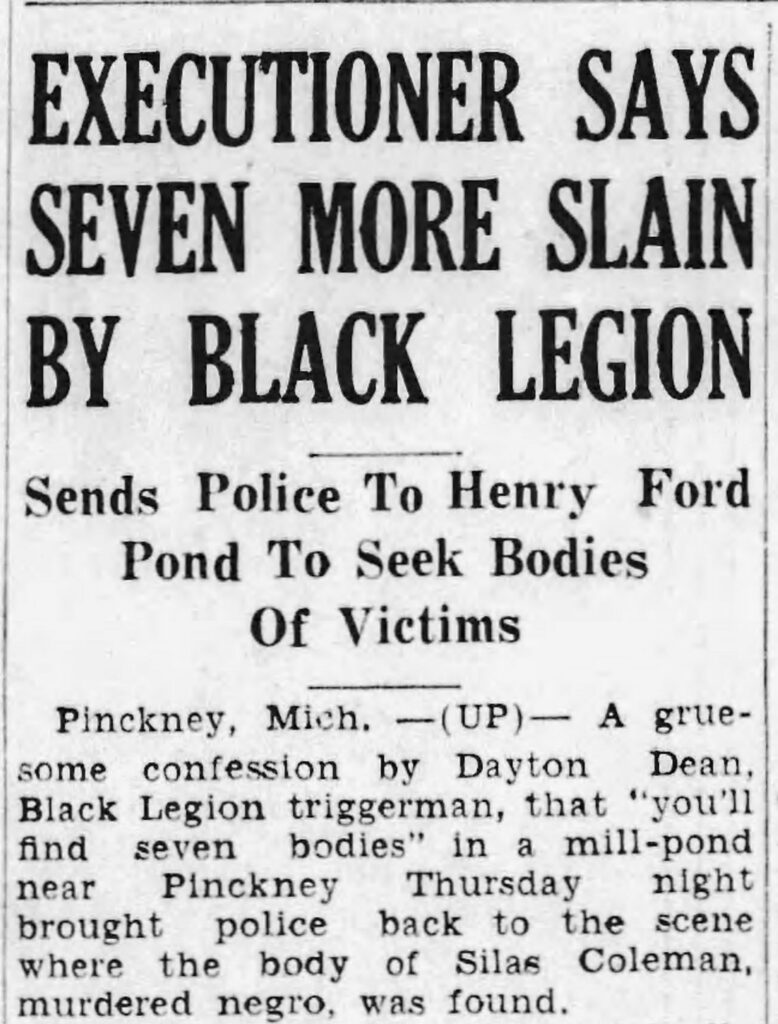
The pond was never searched in 1936, though, because the man who owned it back then, Henry Ford, wouldn’t allow it.
The police badly wanted to search the pond back then, but they eventually gave up; and through the years, nobody followed up on it. And then the Silas Coleman murder became lost to history. It’s hard to find anyone in Pinckney or Livingston County who’s heard about the case.
But 90 years after Silas Coleman was murdered and 89 years after Dayton Dean said there were seven more bodies in there, there’s another bombshell: The Livingston County sheriff says he’s willing to reopen the case and search the Pinckney Mill Pond.
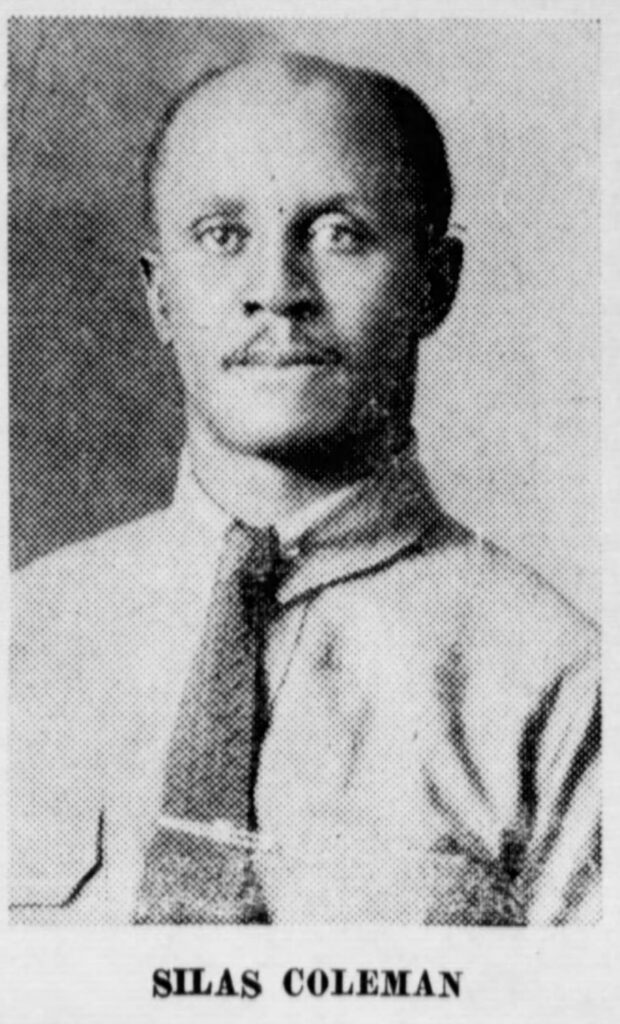
Sheriff Mike Murphy, who’s been around Livingston County forever, had never heard about the Silas Coleman murder, until I told him the story. He was fascinated by it and frustrated as to why they never dredged the pond back in 1936.
Now that the pond is owned by the Village of Pinckney, and Murphy is the one who could order such an investigation, is there a chance we could see if Dayton Dean was telling the truth?
“Yes, it could be reopened,” Murphy said—with one big caveat.
“Do we know the names of the other seven people deceased? That would be key,” Murphy said. “The only way this would get some legs as a cold case is if we had names and could show they actually went missing.”
And that’s the problem. As of now, we don’t know the names of the other seven people.
They aren’t in the FBI files on the case, and there’s no mention of them in any other police records. Sheriff Murphy is still looking, but there’s no record that Dayton Dean told the police who those seven dead guys were. And any chance of getting the names likely died in 1960 when Dean passed away.
So the secrets of Henry Ford’s pond, if there are any, will likely remain secrets. It would seem we’ll never know for sure if Dayton Dean was telling the truth in 1936.
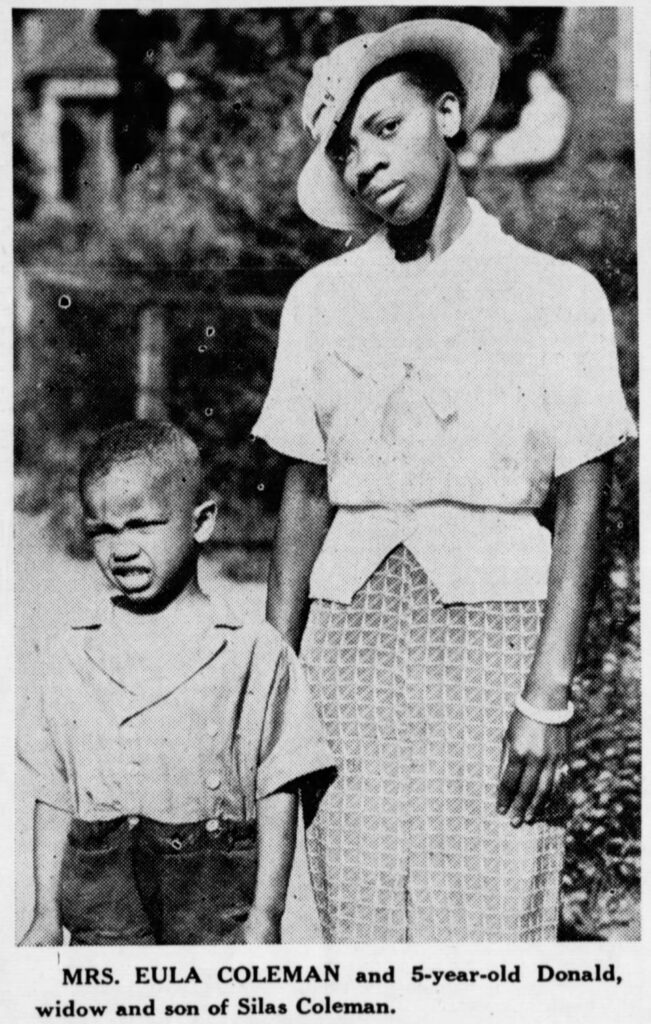
But if Sheriff Murphy is actually able to find an old case file that hasn’t been looked at in nine decades? That would change things.
As we observe the solemn anniversary of Silas Coleman’s brutal murder, here’s the story of what happened 90 years ago and what led up to Dean’s shocking revelation.
The Black Legion formed sometime around 1925. It was viewed as an even more violent and radical evil cousin of the Ku Klux Klan, although they had no direct affiliation with the KKK. Instead of white robes and hoods, they wore black.
The Black Legion operated primarily in Michigan and Ohio, and the members were working-class Protestant white men. They hated all the same groups of people that the Klan hated: minorities, immigrants, Catholics, Jews, labor unions. A lot of them worked in the auto factories, including Ford’s.
The Black Legion hated labor unions, as did Henry Ford and his chief enforcer, Harry Bennett. The Legion would frequently terrorize union organizers as a way of dissuading their organizing efforts, and Bennett didn’t exactly do anything to stop them.
There were rumors, never confirmed, that Bennett himself was a silent member of the Black Legion.
The Legion terrorized and killed numerous people in the mid-1930s, but their two most notorious killings took place in May of 1935.
The first was the murder of Charles Poole, a Catholic and worker for the federal Works Progress Administration. On May 12, some Legion members kidnapped Poole and accused him of beating his Protestant wife. He was shot and killed that night, with Dayton Dean pulling the trigger.
Thirteen days later, with Dean once again in attendance, they shot and killed Silas Coleman in Pinckney.
When Dean was caught in 1936 and charged with the murder of Charles Poole, he decided to flip on his fellow Legionnaires and tell the cops everything, in the hopes of getting a lighter sentence. He told them in great detail what happened on May 25, 1935.
The ringleader of the Coleman murder, Dean said, was Harvey Davis, who was a “Colonel” in the military-style Black Legion and had a cabin on Rush Lake in Pinckney. Dean told the police in chilling detail how the case began.
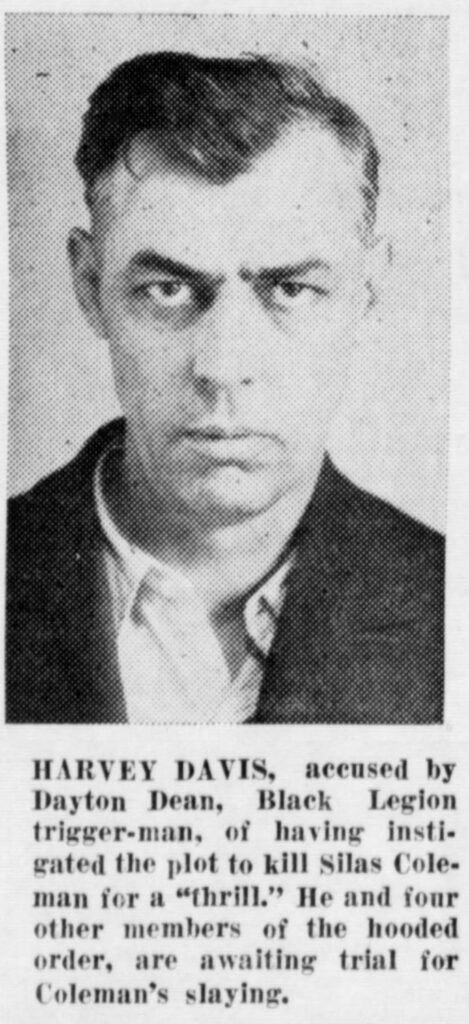
“Davis came in (to work) one day and we were talking, and he wanted to know if I’d get a hold of a colored guy for him,” Dean said. “He said they were going to have a party out to the lake and they wanted to have a little excitement. They wanted to get a hold of a colored fellow, didn’t matter where he came from as long as he was black. They wanted to take him out and kill him.”
And then Dean explained the brutally horrific motive: “Col. Davis said he wanted to know what it felt like to shoot a Negro.”
So Dean recruited a fellow Legion member, Charlie Rouse, to help him carry out the task. Rouse targeted a black man in Detroit named Silas Coleman, who was owed some money for a bit of menial labor he had done.
Rouse found Coleman walking around Detroit on the afternoon of May 25, pulled up in his car, and told Coleman that the man who owed him money was at a cabin in Pinckney. Hop in the car, Rouse said, and we’ll take you to him.
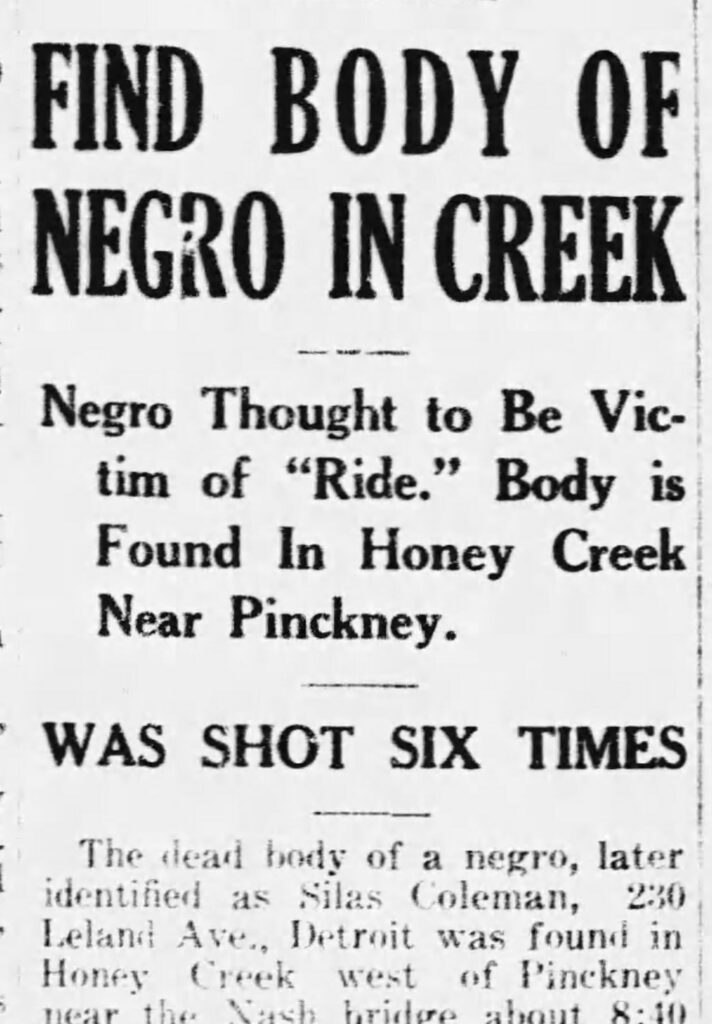
Silas got in the car.
By all accounts, Silas Coleman was a good and decent man. He was a World War I veteran, and had a wife named Eula and a five-year-old son named Donald. He was estranged from his wife at the time. He worked various odd jobs as a day laborer.
On the evening of May 25, Rouse drove Coleman out to the cabin at Rush Lake. When they got there, by design, nobody was home. Rouse told him that the guy must have gone into town, so they got back in the car and headed into Pinckney, about three miles away.
By now, it was about 9:30 p.m. and totally dark outside. Rouse drove Coleman into downtown Pinckney, where the Mill Pond was located. He told Silas to get out of the car and he pointed toward the pond. “He’s down there,” Rouse said. “Just walk in that direction, and you’ll see the guy with the money.”
Instead, it was an ambush. Waiting there with loaded guns were Dayton Dean, Col. Harry Davis, and three other Black Legion members: James Roy Lorance, John Bannerman and Ervin D. Lee. When Silas Coleman started slowly walking toward the water, he heard a gun cock and figured something really bad was about to happen.
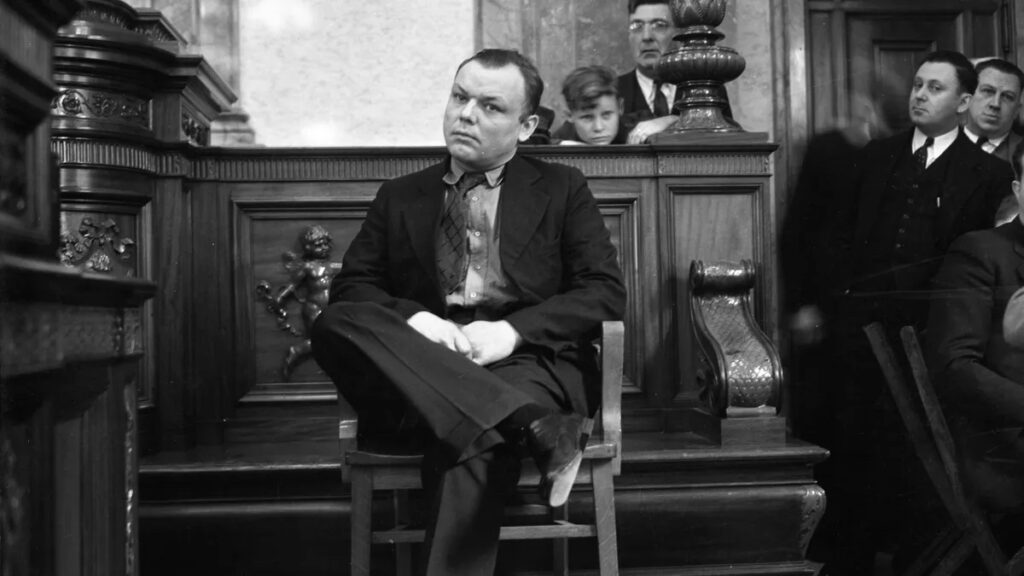
The Livingston County Press reported that Dean later testified, “The negro started to run and the others started shooting. Dean’s gun jammed and he did not fire. The wounded man jumped in the swamp north of the bridge and the five emptied their guns into his body.”
Coleman’s body was discovered a day later, and the local community was horrified. It also took them a while to figure out who it was. The police were eventually able to determine he matched the description of a man from Detroit named Silas Coleman who had gone missing. Mrs. Coleman came to Livingston County to identify the body.
It was a full 14 months later, in July of 1936, that Dayton Dean was nabbed and the Silas Coleman case was solved.
Justice was swift in the case. The killers were caught and charged in July, and the case went to trial in December. They were all found guilty, including Dayton Dean, and sentenced to life without parole. Most of them ended up dying in prison. Ervin Lee was freed in 1966 when Gov. George Romney commuted his sentence.
When Dean was confessing in July 1936, he went with the police to the murder site in Pinckney and told them everything. Then he told them the pond held even more secrets.
The UPI reported the story on July 23: “A gruesome confession by Dayton Dean, Black Legion triggerman, that ‘you’ll find seven bodies’ in a mill-pond near Pinckney tonight brought police back to the scene where Silas Coleman, murdered negro, was found.”

The article also said, “Sgt. Jack Harvill, who originally cracked the Black Legion case, said he believed Dean’s story ‘absolutely true.’”
Authorities questioned a local man named Lucius Doyle, who rented boats to fishermen on the Mill Pond. He confirmed that he often rented boats to Harry Davis and Dayton Dean.
“I knew both of them real well,” Doyle said. “They used to come out here on parties and sometimes they’d bring their friends. I recollect now there was more went out in the boats than came back, but I didn’t think nothin’ of it at the time.”
So there was little doubt in the mind of the police that Dean was telling the truth.
Henry Ford had bought the mill pond a decade or so earlier with the idea of maybe building a factory next to it, so they went to Ford’s people and asked for permission to dredge the pond.
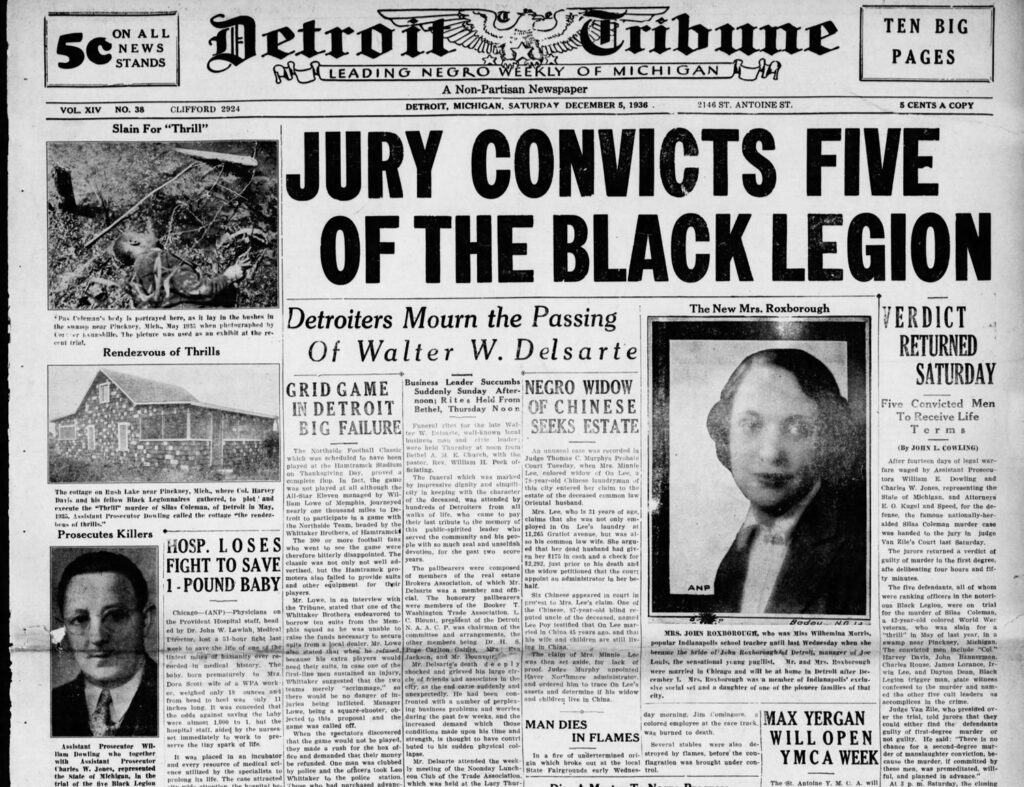
No way, they were told.
The word came from Harry Bennett himself, who denied any and all efforts to search the pond. Speculation, of course, is that Bennett may or may not have known what was in the pond, but given his supposed ties to the Black Legion, he didn’t want anyone finding out.
So the police dropped their efforts. In later years, when Ford sold the pond and ownership eventually transferred to the Village of Pinckney, nobody ever pursued the idea.
The Pinckney Mill Pond is a quiet body of water off M-36 with cemeteries on both the north and south sides of it. People still kayak across it, but not much else.
The director of the University of Tennessee Forensics Anthropology Center, Dr. Dawnie Wolfe Steadman, said there’s a decent chance a skeleton could survive 90 years in the water.
“If the bones were covered early on, they might be in good shape,” she told me.
Unless we find out some names, though, we’ll likely never know.
Buddy Moorehouse teaches documentary filmmaking at Hillsdale College.

